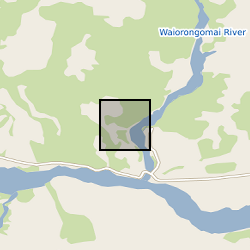IFREMER
Type of resources
Topics
Keywords
Contact for the resource
Provided by
Years
Formats
Representation types
Update frequencies
-

These data were collected to study oxidative weathering processes in the Waiapu River catchment, New Zealand, with potential carbon release sourced from the oxidation of petrogenic organic carbon or carbonate dissolution coupled to the oxidation of sulfide minerals. There, in mudstones exposed in a highly erosive gully complex, in situ CO2 emissions were measured with drilled gas accumulation chambers following the design by Soulet et al. (2018, Biogeosciences 15, 4087-4102, https://doi.org/10.5194/bg-15-4087-2018). Temporal and spatial variability in CO2 flux can be put in context with environmental changes (e.g., temperature and hydrology). For this, CO2 release from 5 different chambers, which were installed over a transect of ~ 10 m length in a gully above a nearby streambed, was measured several times over a short study period (circa one week). In addition, the gaseous CO2 storage (partial pressure) in the shallow weathering zone was measured prior to a CO2 flux measurement. To understand the source of CO2, gas samples were collected and their stable and radioactive carbon isotope compositions determined. In this process, we identified a contaminant, which was associated with the chamber installation, that can be traced in the gas samples that were collected within 4 days following the installation. Details of the subsequent data analysis and interpretation can be found in: Roylands et al. 2022, Chemical Geology: Capturing the short-term variability of carbon dioxide emissions from sedimentary rock weathering in a remote mountainous catchment, New Zealand. This work was supported by the European Research Council (Starting Grant to Robert G. Hilton, ROC-CO2 project, grant 678779).
-

The measurements and data were obtained to study the release of carbon dioxide during the chemical weathering of sedimentary rocks, and how these CO2 fluxes were related to environmental parameters (temperature, hydrology). Weathering of sedimentary rocks can result in CO2 release from the oxidation of rock organic carbon oxidation, but also due to the oxidation of sulfide minerals, production of sulfuric acid and subsequent release of CO2 from carbonate minerals. The rock-derived carbon sources are understudied, and form an important part of the geological carbon cycle. The CO2 flux measurements were made on 5 rock chambers (H4, H6, H7, H8 and H13) installed in the Draix-Bleone Critical Zone Observatory, France, on outcrops of Jurassic marls. Measurements and data were collected from December 2016 to May 2019. Regular visits to the site (~4 per year) returned data on total CO2 flux (Total-CO2-flux.csv). This was explored as a function of temperature and ambient hydroclimate (precipitation). The datasets include the total CO2 flux measured at each visit to a chamber, and measurements of the internal chamber temperature. To determine the source of CO2 measured in the chambers, we trapped the CO2 using zeolite sieves and recovered it in the laboratory. The radiocarbon activity (reported as fraction modern, F14C) and its stable isotope composition (d13C) were measured from CO2 collected from chambers H4 and H6 over the sampling period (Radiocarbon-data.csv). These were used in a mixing analysis to partition the source of CO2 using a mixing model approach (Partitioned-CO2-fluxes.csv) as explained in full in the published paper Soulet et al., 2021, Nature Geoscience. We also measured the geochemical characteristics of the bedrocks being measured (rock-geochemical-composition.csv), including the organic carbon concentration, inorganic carbon concentration and their isotopic composition. Finally, we measured environmental variables of interest - the chamber temperature and the air temperature at the Draix-Bleone observatory (chamber-temperature.csv and Air-temperature-at-laval-le-plateau-weather-station.csv, respectively). This research was funded by a European Research Council Starting Grant to Robert Hilton (ROC-CO2 project, grant 678779) and radiocarbon and stable isotope measurements were funded by the Natural Environment Research Council (NERC), UK, (NERC Environmental Isotope Facility NEIF Radiocarbon Allocation 2074.1017) to Guillaume Soulet, Robert Hilton and Mark Garnett. Full details of data analysis and interpretation can be found in Soulet et al., 2021, Temperature control on CO2 emissions from the weathering of sedimentary rocks, Nature Geoscience
 BGS Data Catalogue
BGS Data Catalogue